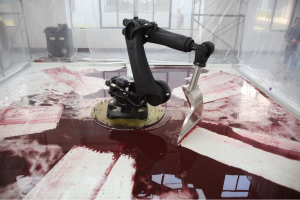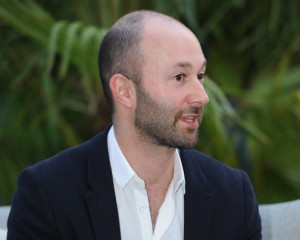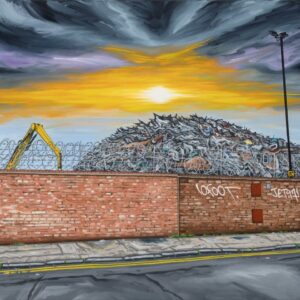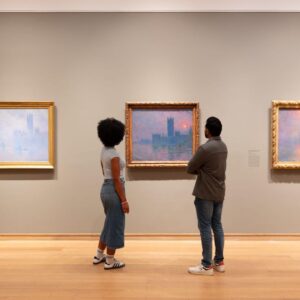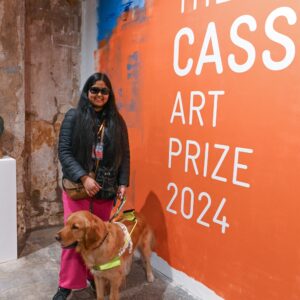
You can now see Ik-Joong Kang’s 70-foot-tall Hangeul Wall at the Korean Cultural Center New York (KCCNY) the world’s largest Hangeul Wall. The 5-story-high work nearly grazes the KCC ceiling, and is accompanied by a retrospective of the artist’s 40 year career, with treasured works on loan from both the Guggenheim and Whitney.
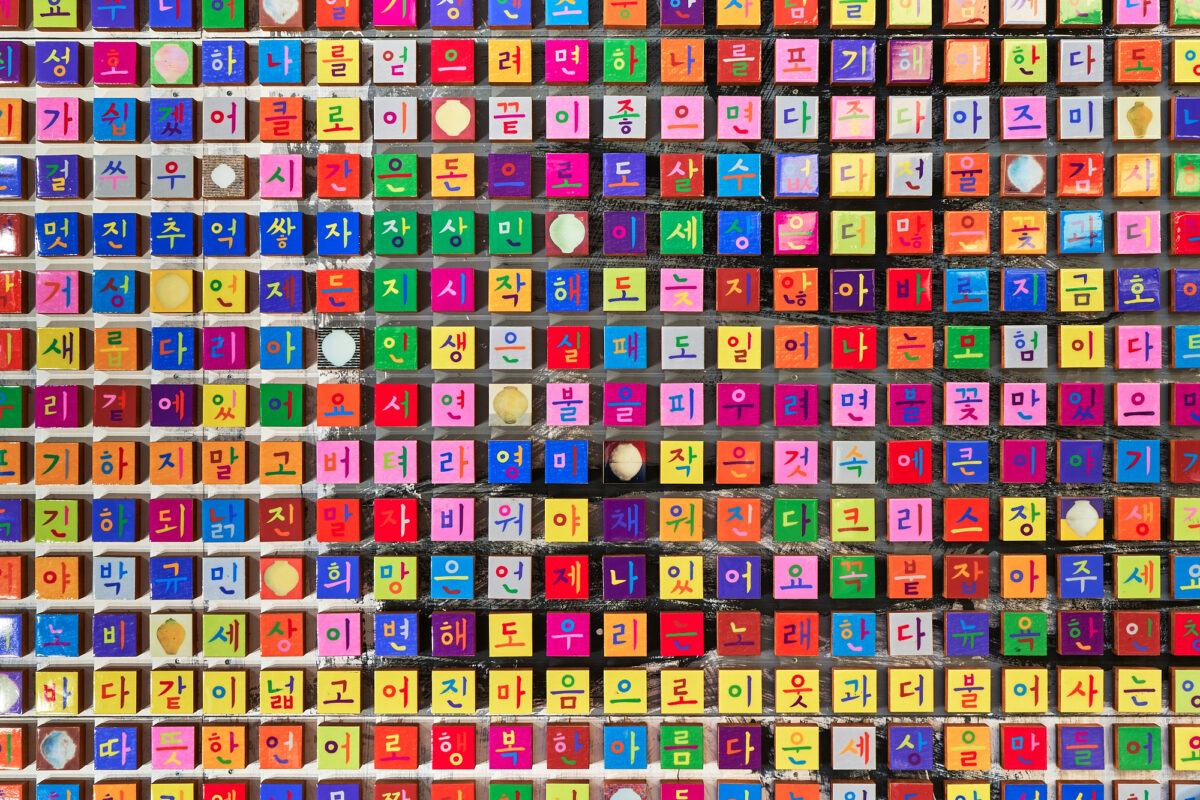
Hangeul is central to the values of K-Culture. My hope is that the Hangeul Wall will not only contribute to the spread of Korean culture but also elevate the universal values of freedom and equality encapsulated in the Korean alphabet.
Director Michael Cheonsoo Kim of KCCNY
The Hangeul Wall measures 26 x 72 feet (8 x 22 meters) and is composed of 20,000 Hangeul tiles, it stands as a symbol of the rich cultural heritage of the Korean language which inspires its name, serving as a testament to our shared human narratives, and a universal freedom of expression. Traditionally, walls are seen as barriers that divide and separate; however, the Hangeul Wall represents a different kind of structure—a canvas for peace, connection, and harmony.
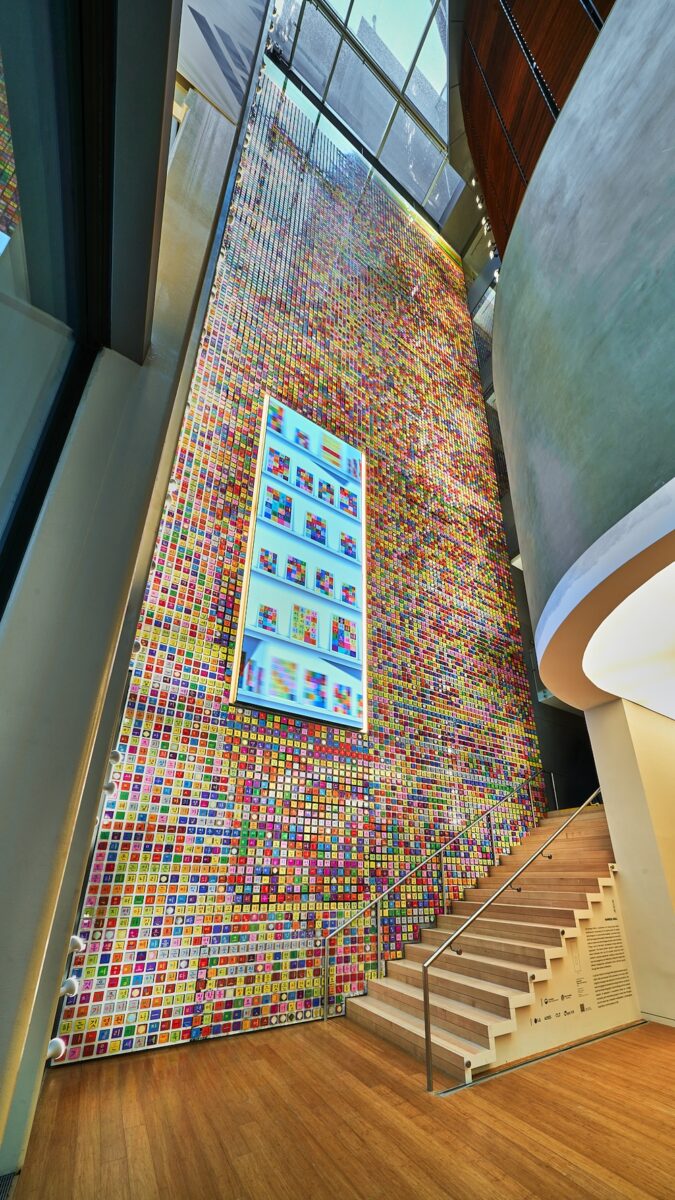
Kang collaborated with engineers at LG to collect personal experiences from people around the world on the topic of human connection, which are represented in the installation’s 20,000 traditional tiles showcasing the Korean alphabet, Hangeul. Linguists, due to its simplicity and elegance, widely consider it as one of the most remarkable writing systems in the world. The Hangeul Wall continues to evolve through an integrated, interactive kiosk, where visitors submit their own sentiments. These are then displayed on a screen seamlessly incorporated into the artwork — an infinite opportunity for the public to add to its chorus.
The artwork marks a new chapter in Kang’s practice, fostering a bilateral communication with his audience by inviting them to co-create, and participate in the artistic process through a digital platform. This collaborative approach underscores the dynamic interaction between the artist and the public while suggesting a future direction for Kang, where collective voices and shared experiences play a central role in shaping his evolving artistic vision.
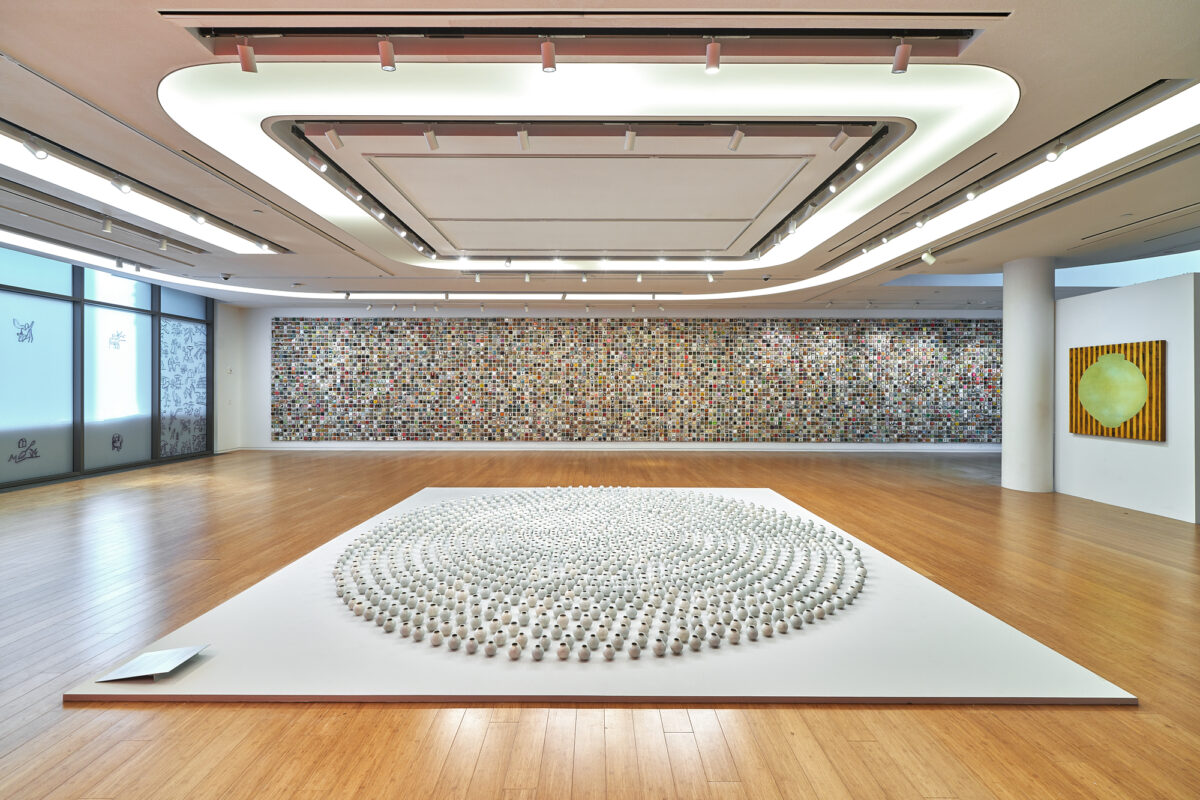
This exhibition also features two historic works on loan from the Solomon R. Guggenheim Museum and the Whitney Museum of Art, respectively. 1392 Moon Jars (Wind) contains 1,392 glazed porcelain jars adorned with enamel paint. The jars, simple and understated, recall traditional Korean porcelain, presenting beauty out of purity and imperfection, and embodying an individual wish. In chorus, the installation depicts a larger cosmic whole, a vast and interconnected universe, and the transformation of cultural heritage over time.
Throw Everything Together and Add embodies the concept of Korean bibimbap. Featuring 6,000 unique 3-inch canvases, this artwork captures the vibrant diversity of New York City, and the harmonious blend of ingredients like the dish itself. Created in Kang’s twenties, the work is an early genesis of Kang’s distinctive, career-defining style. It’s reflective of his formative experiences in New York, merging sound and visual art by a technique initially inspired by Christmas cards. In a manner that anticipates the digital age, thousands of small canvases merge into a single, unified image, an integrated and resonant artistic experience.
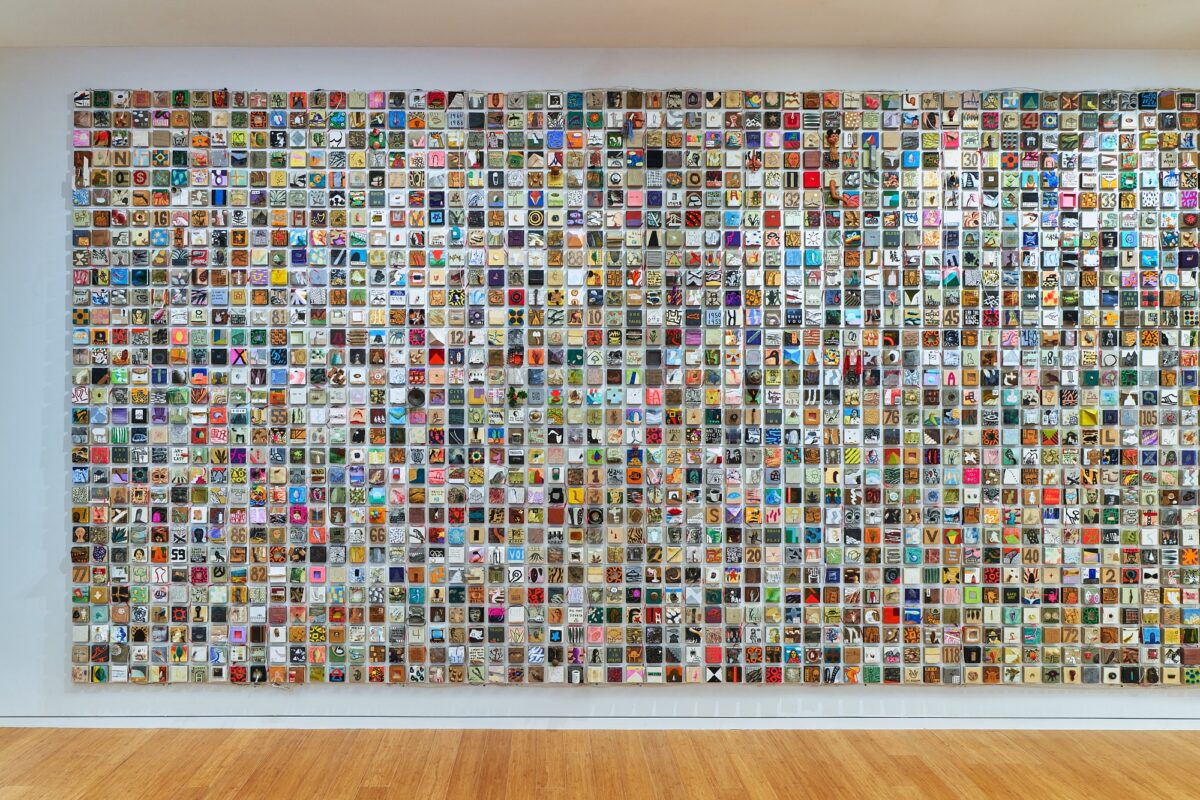
At the heart of Kang’s aesthetic is a macrocosmic worldview that transcends boundaries of race, nationality, age, gender, and nature, engaging the East and West in meaningful dialogue. As a burgeoning Korean artist in New York during the 1980s and 1990s, Kang carried a 3-inch canvas in his pocket, and would sketch during his subway commutes, making visual poetry of the diversity in which he was immersed. He would continue his sketches at the flea market where he was employed, near John F. Kennedy International Airport, during the off moments of his long working hours. While endeavoring to survive financially, Kang refined his creative practice, capturing the intricate details of his life and others while envisioning grand-scale projects.
Kang’s art transforms everyday materials and traditional motifs into profound visual narratives. His monumental works, such as the vast installations composed of thousands of small parts, serve as metaphors for the collective human experience. Each fragment, whether it be a piece of glazed porcelain, a Hangeul tile, or a multimedia element, embodies a story, a memory, or a piece of cultural heritage.
Kang’s fascination with traditional Korean motifs, such as Moon Jars and Hangeul, is evident in his contemporary reinterpretations. His installations illuminate the timeless beauty of Korean culture while engaging with universal themes of love, hope, and human connection. Through his art, Kang transcends geographical and cultural boundaries, illustrating how individual stories and traditions contribute to a collective narrative.
Ik-Joong Kang– We are Connected – November 7th, 2024, Gallery and Atrium at the Korean Cultural Center New York
All installation images Photo: Kunning Huang
About the artist
Born in 1960 in Cheongju and raised in Seoul, Korea, Ik-Joong Kang has been a distinguished figure in the art world since moving to New York City in 1984. He earned his MFA from Pratt Institute in Brooklyn,
New York, and a BFA from Hong-Ik University in Seoul, Korea. Kang’s artistic journey includes a notable solo exhibition at the Whitney Museum of American Art in New York in 1996 and a two-person show with Nam June Paik at the Whitney Museum in Connecticut. His works have been featured in group exhibitions at various institutions such as the Metropolitan Museum of Art, the British Museum, the
Guggenheim Museum Bilbao, the Museum of Contemporary Art in Los Angeles, the Ludwig Museum in Germany, and the National Museum of Contemporary Art in Korea. Kang received the Special Merit prize at the 47th Venice Biennale in 1997 and was part of the Korea pavilion that won the Golden Lion Award
at the Venice Architecture Biennale in 2014. Kang is internationally acclaimed for his large-scale public art projects using multiple 3 x 3 inch canvases emphasizing societal issues and the plight of the individual. His 2001 project “Amazed World,” commissioned by the Republic of Korea in association with UNICEF, featured 40,000 children’s artworks from 150 countries and was displayed at the United Nations in New York. In 2016, he installed “Floating Dreams” on the River Thames in London, serving as a poignant symbol of hope for the reunification of North and South Korea and shedding light on the suffering of displaced communities worldwide. His latest international project, a grand mosaic wall art installation titled “Things I Know,” debuted in Madrid, Spain, in 2023. This installation, part of his ongoing “Hangeul Project” series, features over 6,000 hand-drawn Korean characters on tile canvases created by students studying the Korean language in Spain. This project reflects Kang’s vision of collecting global voices through the expressive medium of Hangeul, symbolizing peace and harmony. Additionally, Kang has announced a majestic Hangeul Temple installation in front of the Pyramids of Giza in Egypt, titled Four Temples — in collaboration with Art D’Egypte, for their exhibition “Forever Is Now .04” — set to debut in October 2024. The project is an arrangement of four structures – Arabic, English, Hangeul and Hieroglyph – each translating the Korean folk song “Arirang,” on the exterior walls. Similarly, drawings by people from around the world are displayed on the interior walls, particularly children and those facing
political and social difficulties: refugees from conflict and people displaced due to the Korean War. By sharing the dreams and challenges of many, Kang believes that Four Temples acts as an antidote, through reconciling our shared difficulties and healing the world. set to debut in October 2024, further extending his influence and commitment to cultural dialogue and artistic expression globally.
